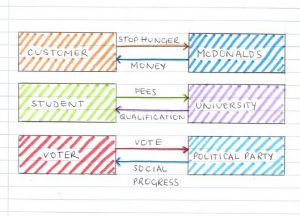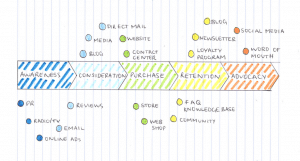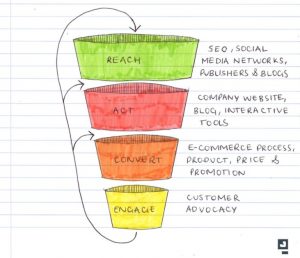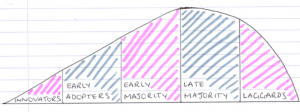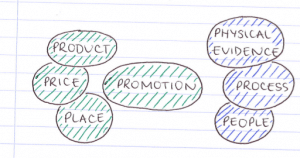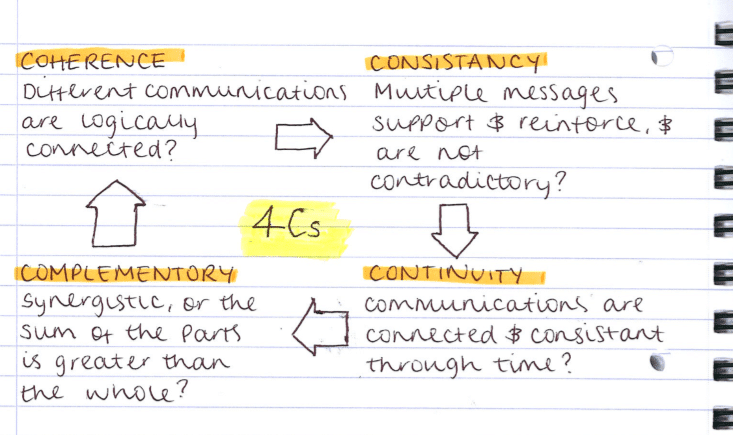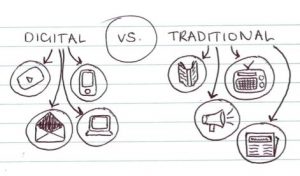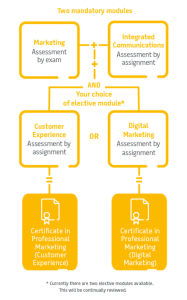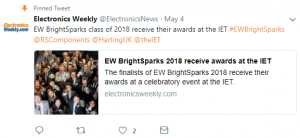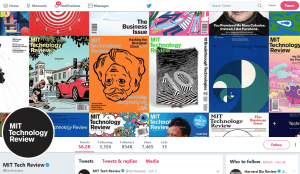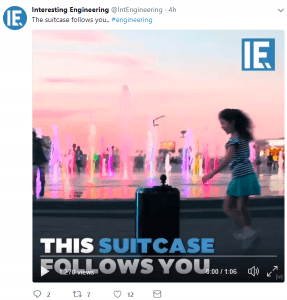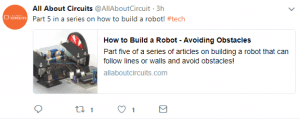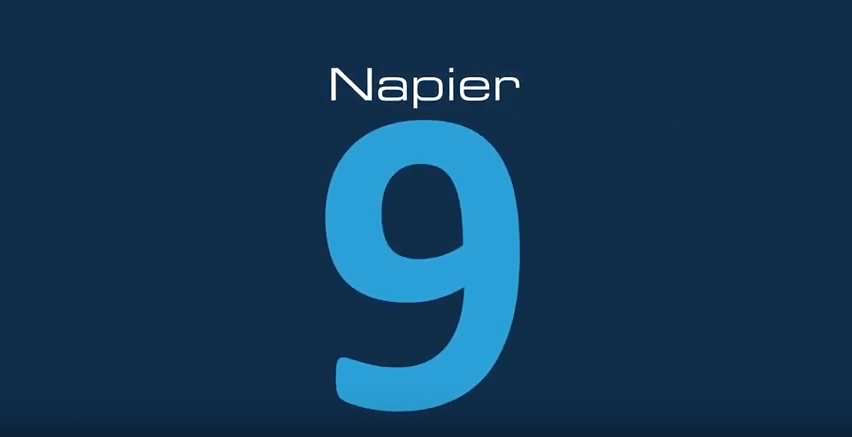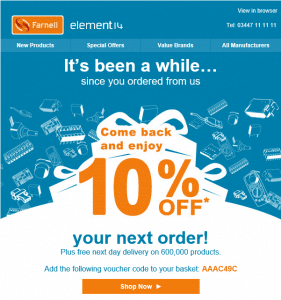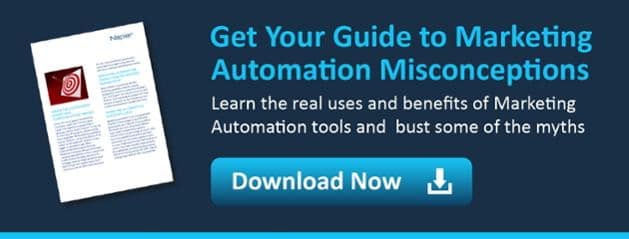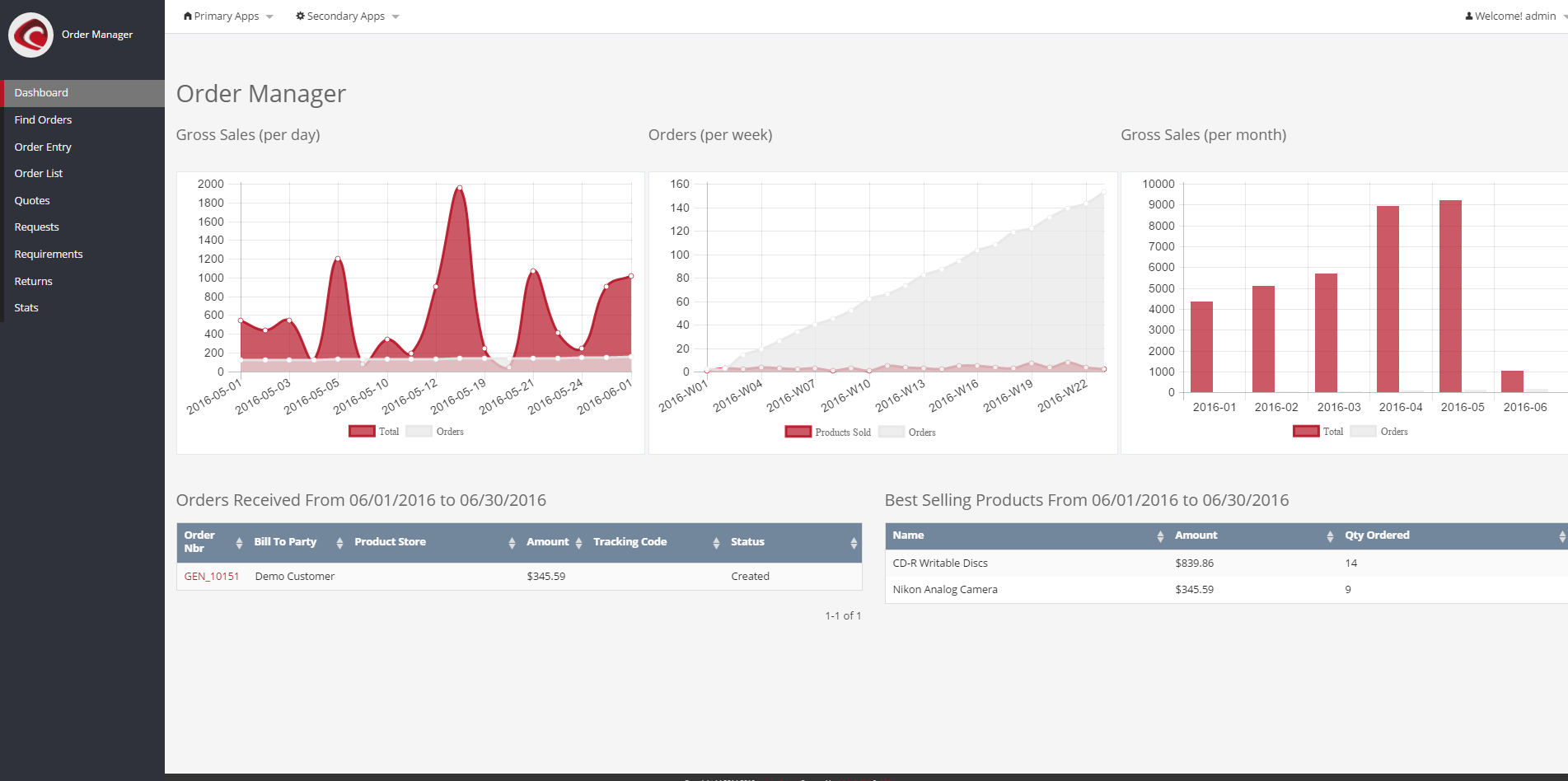CIM Lecture notes - Week 1 - Marketing’s position within a business
What did we cover?
We have moved onto the next module of the CIM course (the marketing module), and begun by exploring the definition of marketing, the function of it and the role it plays within a business.
Marketing defined
A main concept of marketing lies with the idea that marketing is the management of an exchange process, we exchange our goods whether it be money, products, ideas and beliefs for non-profit organisations. This idea can be demonstrated in the diagram below.
Let’s talk about marketing as business philosophy. Marketing plays a crucial role in a business, and the perception of marketing as a business philosophy is definitely one I would consider true. Marketing is where customers stem from and would certainly be considered a fundamental in most businesses.
In the lesson we talked about how marketing is a catalyst for change. This means that marketing sparks an action for change and marketers should be able to respond dynamically because we are working in a fast pace environment where in order to keep up, we must adapt.
‘Marketing is management process responsibility for identifying, anticipating and satisfying customer requirements profitability’ - CIM
Marketing is often perceived as a management process - yet, CIM explain that it is not only managers that do it. It’s more about understanding that marketing handles the responsibility for ensuring that we recognise customer needs as they need them, and quite often identifying the customer needs before they need them. A good example of this would be car air bags. Volvo identified that safety would be a major focus in the future of that industry and were able to introduce air bags at an early stage.
Product sustainability in marketing, is how we satisfy customers and a good product will meet a customer’s needs and expectations. The last aspect of CIM’s definition of marketing to explain is probability, it all comes down to making money, and our end goal of marketing is effectively to turn prospects into happy customers.
Key terms and useful definitions
Differentiation - this is about making sure that your product/ service has unique features, that will help it to stand out aside from the other products in the market
Segmentation - dividing your target audience into individual segments who share common characteristics, the process of segmentation allows you to give more relevant content to your customers (e.g. we have a segmented newsletter that contain different topics, this lets people sign-up to more related news)
Targeting - the process of using segmented groups of your target audience to serve better content to prospects/ customers</span>
Direct marketing - a combination of advertising using computer technology to directly reach out to prospects or customers, this includes email marketing
Relationship marketing - marketing shouldn’t just aim to acquire customers, it should also be used to retain existing customers, relationship marketing is the term used for the on-going relationship with the customer
Social marketing - over recent years marketing has grown and now covers more than just the traditional channels, there are now government agencies that are trying to implement people attitudes to specific issues such as healthy eating or anti-smoking campaigns - this is social marketing, campaigns which aim to promote social well-being
Market orientation - the focus on identifying and satisfying customer requirements is known as market orientation
Company orientation
Orientation means relative position, in this context it means how a company views the relationship with their customers. There are a few different views when it comes to business drive, below are some of the ways that a business may see themselves relative to the market they are in:
- Product orientation - the company are high advocates of their product, they believe that their product is the best out there. The problem with this view is that the company will invest a lot of their money into the manufacturing of the product and do this because they have assumed that people will want to buy the ‘best’ product in the market.
- Production orientation - making the cheapest product there is may appeal to some people... but it is not always the best approach. Some companies will put a lot of time and effort into producing the cheapest product on the market to maximise profits. The major flaw here is obvious, you will potentially lose customer over low-quality items.
- Sales orientation - the need for continuous sales, for companies only really looking into the number of sales behind the product. Short term this is effective for income however, in the long run you could miss out on opportunities by hounding down on such a small area of the overall picture. There’s an argument that there should be a section for companies who have a ‘marketing orientation’, but to adapt this view would mean you perceive marketing as just a sales support role and don’t take in to account many other forms of marketing, including strategy on thought-leadership pieces and content development especially in B2B marketing.
- Market Orientation - this type of organisation wants to engage with their customer to build long-term relationships. This company often understands the importance of understanding what customers want from your business (market orientated companies are market driven, different to marketing orientated companies who are market driving).
It’s clear that the goal here is to hold a market orientation within an organisation, so why aren’t all companies market orientated? Possible reasons include leadership issues, lack of customer insight, lack of infrastructure, or the company may have a too transactional approach when it comes to marketing.
CIM Lecture notes - Week 6 - Digital marketing plan models (Your planning tool kit!)
What did we cover?
As the due date for our coursework was quickly approaching, this lesson was spent recapping on multi-channel campaigns and the models we have worked on throughout the units. We also looked at how exactly, we can in-corporate these into a digital marketing plan.
Customer Journey
To understand the customer journey, you must investigate the different touch points that your customer experiences with your company. I’m sure you are aware that customers don’t just make any purchase, from a company placing a product in front of them...
The customer journey is the pathway your customer takes from the first step of understanding the problem, to end goal of making a purchase from your company. Marketing channels are your customer, and brand touch-points. There are now so many different channels that can reach customers, and all customer journeys will be different for each brand depending on the platforms and channels your customer uses.
The marketing activities on the top demonstrate the actions made by the customer e.g. reading a blog, or visiting the company website, and the marketing activities along the bottom are actions made by the brand.
Multi-channel Campaigns
If executed correctly then multi-channel campaigns will increase your market reach for the same message, you would be extremely lucky if all of your audience were using the same platforms! In reality, they are most likely not, and this is why it’s important to use more than one channel to get your message across.
These campaigns also give you the ability to integrate with segmentation, as well as buyer personas. This integration means that when reporting you can look at campaigns as a whole, rather than analysing in sections. This will give you a much better idea of the success of a campaign.
Offline marketing activities can also be integrated and use the same messaging. However, this is slightly harder to report on and align with your online marketing activities.
Multi-channel campaigns will increase the overall strength of the message in your campaign and seeing more of the same message will reinforce it.
Marketing Funnel
The funnel outlines various stages that a prospect will follow, starting from the first point of contact such as a form completion on a website, to when the prospects makes a purchase. It’s a good way to visualise the customer journey and helps to demonstrate the funnel like process. Marketers should start broad and aim to capture as much leads as possible, then over time as you nurture prospects they should move down the funnel. Some prospects will drop out for reasons such as losing interest in your product, and as you get closer towards the end of the funnel you are left with the prospects who will turn into customers.
RACE Model
This model was introduced to aid online marketing activity planning, it integrates into the stages in the marketing funnel above.
REACH: [Buyer stage - Exploration] For raising awareness, this is usually done via social media platforms such as Facebook. Blogging and search engine optimisation is another way that companies can reach their customers.
ACT: [Buyer stage - Decision making] This is where the company is interacting with the customer through use of the website and they get closer to becoming a lead or customer. Blogging, content offers, and interactive tools are all ways that a company can act with customers for this stage.
CONVERT: [Buyer stage - Purchase] The contact has now become a valid customer and has completed a purchase.
ENGAGE: [Buyer stage - Advocacy] This is where companies should continue building the long-term relationship between them to encourage customers to become advocates. This will lead to a repeat sale or potentially recommendations to new customer who haven’t bought from you before.
SOSTAC
Planning... Where do you start? There’s a model for that! The SOSTAC model was created to help marketing planning, and it outlines a good methodical process to follow. The model helps guide you through all the necessary components of a marketing plan, it covers everything from identifying where you are now, getting where you want to be, and everything in between.
This is what SOSTAC stands for:
[S] Situation Analysis - Where are we now?
[O] Objectives - Where do we want to be?
[S] Strategy - How do we get there?
[T] Tactics - How exactly do we get there?
[A] Action - What is out plan?
[C] Control - Did we get there?
SITUATION ANALYSIS: At this point in the planning process you are trying to identify where you are now, you should consider using the SWOT tool here. Key areas to focus on in the situation analysis are marketing trends and themes, how well your competitors are performing, and your company’s internal resources and capabilities.
OBJECTIVES: The SOSTAC planning model uses the 5 S’s to help distinguish where we want to be:
Sell - Customer acquisition and retention targets
Serve - Customer satisfaction targets
Sizzle - Wow factor, this is the added value you offer
Speak - Engaging customers
Save - Quantified efficiency gains
STRATEGY: Moving on to working out how we actually get there, this stage in SOSTAC will give us an overview of our plan using the STOP & SIT tool:
Segments
Target markets
Objectives
Positioning (OVP)
And
Sequence (Trust, Try, Buy)
Integration (CRM & Database)
Targeting and Segmentation
TACTICS: You’ve done your overview of how you’re going to get there, now this stage goes into the specifics of how your strategy is going to work. The tactics of your marketing plan should talk about the 8 P’s of marketing, communications mix, content plan, and a contact plan.
ACTIONS: Who does what, and when do they do it? This stage assigns people with responsibilities, and tasks. It is also used to outline the processes and systems needed, internal resources and skills, and also if you require external resources they can be mentioned here.
CONTROL: Optimise! This section of the plan uses your KPI’s, objectives, and web analytics to optimise your activities. Through monitoring you can measure the success of user experience, conversion rate, frequency of reporting, and the process of how you report and carry out actions.
Why not visit Napier’s Toolbox if you’re interesting in producing your own tools for evaluation?
CIM Lecture notes - Week 5 - Describing the process and stages involved for digital adoption
What did we cover?
Today’s lesson was focused on describing the process and stages involved for digital adoption and evaluating platforms for different contexts.
What is digital adoption?
The world is integrating to digital whether we like it or not, digital adoption is about understanding how to adapt to this change and use it is how intended.
A very common misuse of digital adoption is that it is a business’s customer relationship management system (CRM), if all of your sales team are on board and using it to track and record every sales action then you could safely say that you are using it to its intent. Unfortunately, this isn’t always the case, a lot of companies are not using their CRM system to its full potential, with only some employees updating occasionally.
Diffusion of innovation model
This was a model that was introduced by marketers to help better understand exactly how a buyer adopts and engages with a new product or technology over time. It’s a model that is used by businesses when they want to gage how a new product or service is going to perform in a new market.
The diffusion model shows the five categories that a consumer can fall into and, as a business, how to engage with these different categories. This is the diffusion model:
These are the categories that make up the diffusion model:
- Innovator - Innovators are small groups of people that are exploring new exciting ideas and technology opportunities, the followers for these ‘gadget fetishes’ will typically have a lot of marketing content available to them, such as specialist blogs like Gizmodo.
- Early adopters - You would consider early adopters as the ‘opinion leaders’ because they share positive testimonials about a new product or service; early adopters seek improvements and efficiency. To get engagement from an early adopter it will require more persuasion than the innovator; However, they are receptive to change.
- Early majority - Followers that are likely to read reviews to understand to the product, they will look for product reviews via YouTube, YouTube is the platform the majority will find business product reviews.
- Late majority - They don’t tend to be keen on change, this category of consumer won’t tend to buy a new product unless there is strong evidence in the success of the product/ service or feel that they are being left out by not owning. To engage with this audience, businesses should provide marketing material, evidence and reviews from consumers in the ‘Early adoption’ stage.
- Laggards - Tend to prefer to ‘lag’ behind... these are not your trend setters! Laggards will only get on board with your product or service once they have researched statistics or felt pressure from others who have bought.
Evaluating platforms
Platforms have different strengths and weaknesses, it’s important to consider which platforms that are successful in different contexts. Platforms could be evaluated for the following contexts:
Depth and breadth of coverage
-
- How frequent is the content? 24/7?
- How many people are you reaching?
- Celebrity endorsements
- Websites give you a lot content, they are great for depth
Analytics and metrics
- How easily can you access metrics for a platform?
- Can you identify the success/ failure of a campaign?
- Using email platforms, you collect a variety of email stats (e.g. bounce rate, open rate), making the platform great for tracking your campaign
Collaboration and workflow
- What platforms enable you to collaborate with others?
- Crowdsourcing (e.g. social media)
Engagement
- Responsive marketing
- How easily can you measure customer engagement?
- Does the platform allow you to measure if it was a positive or negative engagement?
Scalability
- How efficiently can a campaign be scaled? Global?
- Does the platform allow you to tweak the budget spend? (e.g. AdWords)
- Can you run multiple campaigns at once?
These are the main points ....
CIM Lecture notes - Week 4 - Digital tools strengths and weaknesses
What did we cover?
In this lesson we learnt about digital tools in more detail, and how they can support and enhance your marketing strategy with their strengths and weaknesses. We also looked at how digital hardware can be co-ordinated.
Strengths and Weaknesses for Some of the Digital Communication Mix
Live chat
Strengths:
- Oversea call centres now mean that we can overcome language barriers, and improve the customer experience
- Live chat enables 24-7 customer service to be available
- Often chat ‘handlers’ are able to multi-task and help 2-3 customers at once
- Chat bots allow you to send relevant and useful links to customers in need of information
Weaknesses:
- Software hitches or technical difficulties has potential to result in a bad customer experience if the line gets cut off
Video
Strengths:
- HubSpot found that 55% of people watch video content thoroughly, appose to skimming. As for blogs where it is more common for people to skim.
- YouTube is the second largest search engine, proving there is a high demand for video content
- Video is widely used for learning and entertainment, educational videos make great shareable content
Weaknesses:
- Costly and time consuming to create
- More bandwidth required
- People won’t always opt for video over text content if they are in an open area with others around them
Social media
Strengths:
- It’s Free!
- Humanises your brand and gives the opportunity to represent brand values and voice
- Most social media users will log into their account at least once a day, proving that people are regularly using these platforms
Weaknesses:
- Time consuming
- The Edelman Trust Barometer has revealed that media is the least trusted source of all markets
- Bad PR around social media such as the Cambridge Analytica scandal
Podcasts
Strengths:
- Helps to build relationships, your audience is listening because the content is relevant, and they are interested
- Content to build thought leadership perception
- Can be used as live content and then re-purposed as a downloadable offer afterwards
Weaknesses:
- File sizes are often large, which could make it hard for people who have a slow internet connection to access (an audio only podcast would save file size)
- Unlike a webinar or conference call, there is no way for your audience to interact, get involved and ask questions
Applications
Strengths:
- Apps are more than just social, they can be used for news, games, sports etc.
- Apps give brand an opportunity to provide their customers with an app that provide them with something of value, your app could help customers solve a particular issue, or be transactional
- More opportunity within apps if you integrate advertising onto the platform
Weaknesses:
- Mobile apps require on-going maintenance to solve any technical issues
- Expensive
Strengths:
- Flexible design will help to convey branding
- Scalable, meaning you can reach you audience at a global level
- Thanks to marketing automation, we can save time by using automated emails
Weaknesses:
- Bounces and undelivered emails, there are lots of things that have an impact on whether your email will bounce or not (e.g. keywords, html, or out of date marketing lists)
- Resources and skills - it’s sometimes easier to outsource if you don’t have the right time or skills in-house as email campaigns often take a lot of preparation and content
How Does Digital Hardware Fit into Marketing?
Mobile/ handheld devices/ smart phones
Mobile devices are now used more often than desktops are for traditional browsing, and that’s why it’s important to adapt to this change and integrate marketing with mobiles. Mobile marketing interacts directly with the consumer and has great tracking benefits; Tracking is almost instantaneously and helps us to better understand user behaviour.
Wearables
This market is fairly new and has lots of potential, wearables are widely used and predicted to keep growing. Wearable devices provide marketers with more opportunity to give users a more personalised experience, geo-ads are an example of a personalised marketing approach.
Internet of things
The IoT will continue to grow as more and more devices will be connected via the internet. For marketers this means they can give a more tailored and relevant experience to the user that could be based on location, and demographics.
TV/ Radios/ Consoles
Marketers are now having to think about the direction that the world is going in, Netflix’s CEO has claimed that “broadcast TV will probably die by 2030”. Consumers now have more control and would rather pay to just watch the TV shows they want, when they want it, factors that businesses should acknowledge when considering commercial advertising.
CIM Lecture notes - Week 3 - Digital tools in the marketing mix
What did we cover?
How digital tools can support and enhance marketing efforts, we also looked at role of digital marketing within the marketing and extended marketing mix.
Digital and the marketing mix
The marketing mix is your core 4P’s of marketing (Product, Price, Place, and Promotion). These are the foundations for your marketing mix, but as time as progressed we now also have the extended marketing mix. This is made up of 7P’s that are tailored for use in service industries (Product, Price, Place, Promotion, People, Process, and Physical Evidence).
Below are the ways that these important P’s can be thought about in a digital aspect:
Product - Digital products, brand rise and fall, digital enabled services
Price - New dynamic pricing strategies meaning that price can be updated in real time according to how popular the product /market is at that point in time, enhanced measurability of pricing, less overhead costs for eCommerce<
Place - Fewer intermediaries, global locations, digital product delivery
Extended marketing mix::
Physical Evidence - All online collateral is consistent and recognisable with branding, higher use of customer testimonials in messaging, expert content enhancing brand confidence such as webinars
Process - Better customer communication, enhanced eCommerce platforms, introduction to customer relationship management (CRM) systems such as SaleForce
People -Social media marketers now commonplace, marketers now need digital skills, brand advocacy now actively encouraged
Digital communication and the online community
There are thousands of free, as well low-cost tools that can help us as marketers. The important point to remember is that integrated plans require a range of communications, which will depend on your segment and message focus.
Within the past ten years, digital has grown massively and marketing can now happen on almost every communication platform.
The digital communications mix includes the following:
-
- Blogs and chat
- Video sharing
- Social networks
- Wikis, user forums and groups
- Podcasts
- PSS
- Widgets
- Photo sites
How I Learnt About HTML Emails and Marketing Automation
Marketing automation can seem daunting... especially when looking at the full picture from someone who hasn’t worked with it before. Marketing Automation is so valuable to your business from cutting down time spent on previous manual tasks such as the creation and sending of emails, social media posting, and of course the tracking insights that come with measuring all your marketing activities in one place.
1. HTML foundations
To take this back to very basics and where it all began, was of course learning the foundations of HTML. No, don’t worry... you don’t actually need to know HTML, the current popular MA platforms enable to you create emails easily using ‘building blocks’ and by dragging and dropping the content where you want it.
Taking this back to how I learnt about MA, this is where it all started, with my first HTML email as shown below:
This was one of the initial tasks I started with when I was still an apprentice at Napier; it was purely a training task that was set out for me to complete using Notepad++ as the tool to write the code. Being a keen festival goer, and having free reign over the design of the layout, I started writing the code aimed to be used as a promotional email for Wilderness festival.
The VERY basic form of HTML coding can be seen below, this is an example taken from W3Schools including the code and what it will look like when displayed on a web page:
2. Client work
Progressing on my training tasks, the next step was putting this learning into practice with client work. The first client project I worked on was an eblast, which already had the structure from previous email campaigns. It was important to run a consistent theme across campaigns so, for this email it was a matter of keeping the format and knowing which parts of the code to alter. My training on HTML meant that I knew what tags to update and how this would affect the final layout.
Changing HTML can be scary, one missing ‘<’ and your email could risk having random white spacing, images over lapping, odd fonts of text, it’s endless really. You must make sure you’re closing all your tags and using the right text. An example of a simple mistake is when styling you accidentally use the UK spelling for ‘colour’ as in HTML we use the American spelling like this:
How do you check you HTML exactly? Using a HTML validator is one of the methods I regularly used when writing code, I used CSE HTML Validator, this will pick up any potential problems and flag them in your code.
3. Intro to HubSpot
This is where I moved from using Notepad++ and started using our Marketing automation platform, HubSpot. In this platform I was working on client email campaigns, that originally started off as static emails that would be automatically sent to contacts that met the ‘criteria’. This could be an action such as the contact purchasing a product off the website.
HubSpot email automation works using ‘workflows’, once a contact has completed the required action they would then be put in a workflow that follows with a series of actions. Workflows can be tailored to achieve different outcomes such as welcoming a new customer, engaging with current customers, or sending relevant content as a result of an action they made.
4. HubSpot advancement
As I continued developing more experience in HubSpot and its capabilities, the team and I at Napier worked to develop a series of emails that were designed to automatically pull through data from the customer management system. With this we could pull in customer purchasing data into automated emails that we were distributed to customers.
Moving onto smart lists, and personality tokens was the next step in my development into learning marketing automation, smart lists are what we used in HubSpot to get the right emails to the right customers. Smart lists are created using smart criteria that assigns contacts into lists. It gave the customers a much more personal experience that was unique to them, we also used HubSpot’s ‘personality tokens’ to personalise the email one step more; These personality tokens can be used to include the customer’s name in the email body.
5. Top tips for getting started with Marketing Automation
- Use personalisation / dynamic content
- Segment your audience for better engagement
- Use MA to re-target prospects
- Get your timings right, remember to set the times in which your automated emails are being sent, you don’t want customers getting your marketing emails at 3am!
- Make sure to allow recipients to have the option of viewing the email as a web version, just in case the email doesn’t render on their email server
CIM Lecture notes - Week 2 - Integration of Online and Offline Marketing
What did we cover?
In this lesson we were assessing the impact, and influence of the dynamic digital environment. We discussed the integration of online and offline marketing concepts and applications, and also looked into how customer behaviour has changed as a result of the digital environment.
Integration of online and offline marketing
Digital is great but... Not every ad will look the same across every channel.
Multichannel campaigns (combinations online and offline marketing techniques) can be used to reach your audience and connect with them. The key is for campaigns to be consistent and engaging, your campaign could be focused on digital but you can integrate other channels such as print advertising to help increase your reach.
Consistency will improve awareness and ad recall, while taking a multichannel approach will help improve the overall engagement.
Different channels have distinct strengths and weaknesses, an integrated campaign doesn’t mean that you have to do the exact same thing across all channels, it gives you the flexibility to tailor each message slightly for the ad to utilise the strengths of each channel.
The 4 C's
This model is what is used to generate a successful integrated campaign, Pickton and Broderies 4C’s outline the 4 key elements to help your campaign reach its goals.
These are the 4Cs to consider below:
Customer power!
Yes! Customers now have more power. With the influence of digital and online coming into place we see that consumers now expect more communication from companies before making the conversion from a lead to a customer.
These are some of the key ways that digital has changed the purchasing process:
- Less intermediaries between the brand and customer due to websites and eCommerce
- Brands are closer with customers through their use of social platforms
- New technology enables more convenience for customers, Chats bots enable a 247-communication platform for customers to reach out to your company
- Customers can readily access more information at the ease of a Google search
- Payments are made easier through eCommerce sites
- More availability for consumers, due to globalisation
CIM Lecture notes - Week 1 - Digital disruption and The Scope of Digital Marketing
What did we cover?
In this week’s lesson, our focus was on the impact of digital disruption. What exactly is digital disruption? Digital disruption is the introduction of new digital products, and more importantly how they can make an impact on your business model.
We also looked at the scope of digital marketing, with specific attention to the Internet of things, Big Data, and Marketing Automation.
Digital Disruption
Traditional marketing concepts are not to be thrown aside, and they’re still valuable! The shift over to digital presents new opportunities for a more direct, tailored, diverse and accountable marketing approach.
With the shift to digital, we now have more data than ever, and marketers need to make sure that they are utilising this power.
Below are some key opportunities and challenges that arise from digital disruption:
Opportunities-
- Enhanced customer knowledge
- Faster and more efficient channels
- Personal engagement
- Community-based marketing
- Two-way dialogue
- Niche segmentation
Challenges-
- Limitations with technology
- Customer brand power
- Training needs
- Cost of initial investment
- Too much data!
- Partial participation
The Scope of digital marketing
This is where we looked at how digital marketing is progressing and what new technologies are coming into play as we move forward.
Internet of Things:
The internet of things is the connection of remotely controlled, physical items to an online network. Through the IoT devices we have access to more accurate data that will help to market to people more successfully. Recently, there has been a significant rise in the number of connected devices over the years.
“The IoT promises to bring every object, consumer and activity into the digital realm”
Paul Daughty, Accenture CTO, Accenture
wearable devices such as the smart watch, is a great example of the type of device that can be used in marketing. Wearables like the smart watch are fitted with geo trackers, and location based vouchers are a way of utilising your customer data in a way that will benefit them.
Big Data:
The use of big data in marketing is accelerating and, at the moment, mostly being generated from users. However, future data will move to being collected by machines and connected devices (Internet of Things). Through data collection more opportunities are offered to better understand our customer’s needs.
90% if the data in the world today has been created in the past two years
Data is being generating constantly, but to make good use of the data it needs to be transmitted, stored, analysed, and acted upon. The two key areas for marketers to use is personal information, and business/ impersonal information.
Marketing Automation:
To put it simply, marketing automation is the automation of all your manual tasks; this could include sending emails, social media posting, and other various marketing activities. The automation of these activities saves time and allows you to focus more on the monitoring, measuring and improving of the customer experience once the campaign has been set up.
Marketing automation lets you integrate personalisation, 24-hour availability, and the ease of measurability with your campaigns; It’s widely being adapted by companies as a ‘must’!
CIM Student - Where Did it all Start?
(Certificate in Professional Marketing (CIM) Level 4 - Intermediate)
It was approaching the end of my apprentice and the big cloud that dawned above me was, what’s next...?
Over the past year and a half, I have thoroughly enjoyed my time as an apprentice at Napier. It’s down to the experience I have gained, the things I have learnt, and of course everyone at Napier who has supported me on my path.
What’s next?
So, I knew that I wanted to stay on with Napier, but more specifically, what comes next? I spoke to people around the office and found out about the Chartered Institute of Marketing (CIM), others have taken part in this certification at Napier to boost their marketing skills and qualifications.
CIM
The Chartered Institute of Marketing offer qualifications that are designed to help guide marketers through their career, and development. As I had previously completed the apprenticeship in digital marketing, I went direct to the Level 4 - Intermediate level, rather than the Level 3 - foundation certificate.
The CIM course is made up of 3 modules:
Marketing -
This module of the overall qualification is mandatory and it’s recommended that you do this unit first, it goes into the role and function of marketing as well as covering what it is that influences buyers to buy.
Integrated Communications -
This module is also mandatory, it will look into the different communication methods for communication with customers, including both inside and outside the company.
And your choice of...
Customer Experience -
It’s really important that you are be able to understand every aspect of your customer’s experience in order to meet and deliver to the customer’s needs, this module talks about how to monitor and measure customer satisfaction.
or...
Digital Marketing -
In this module it covers the digital marketing landscape, it looks at emerging technologies and how we can utilise these in our marketing. Another important topic that this module goes into is your digital tool kit, which is about how to use digital tools to enhance your marketing.
If you would like to see more information about the CIM certification, please visit https://www.cim.co.uk
What’s next to come?
I will be putting together my weekly lecture notes into a series of ‘Lecture notes’ blogs, so that you can learn about marketing with me.
To stay updated, you can check the blog for my lecture notes.
Lecture notes
CIM Lecture notes - Week 1 - Digital disruption and the scope of digital marketing
Top Industry Twitter Feeds
Twitter is great platform for marketing, but it’s a lot more than just adding some text, a link, and a hashtag. Successful Twitter accounts will reach out and engage with the right people and with the right content. But how exactly do you know what content to share?
Often the best way to learn how to grow your own account is by looking at existing accounts. What are they are doing? And how well is it working?
We've compiled a list of some of the best Twitter feeds in the industry for you to use as inspiration for your own account, whether it be personal or for your company.
Electric Engineering - @eeportal_com
This account focuses on providing a portal dedicated to electrical science and education. Joining Twitter in 2008, they currently have a good following at 68.8K followers. Electrical Engineering share great educational content from their Electrical Engineering Portal as well from their Electrical Engineering Daily Dose blog. Educational content is great for giving your followers content that is valuable because it’s something that they will gain from and find useful.
Another good tip we can pick up from EEP’s Twitter is the consistent stream of content in their feed. Consistently sharing relevant content will position yourself as a industry expert and give people a great reason to follow the account.
IEEE Spectrum - @IEEESpectrum
IEEE feature all the latest technology and engineering news updates. They’ve been using Twitter since 2008 and have a massive 129K followers, so they must be doing something right. IEEE consistently have a good flow of information, and link to appropriate hashtags and other users. Linking to other Twitter accounts is a good way to increase engagement, and show that you’re involved in the community.
Electronics Weekly - @ElectronicsNews
Electronics Weekly use Twitter to promote its content on the Electronics Weekly website, with most of the content centered on industry news. Looking more specifically at the text in the tweets that Electronics Weekly are sharing, they have a good use of hashtags which will help increase the reach of their tweets, and means that their tweets will come up when users are searching for those key terms.
A pinned tweet might be something that you could consider for your own account, if you’re not using one already. Whichever tweet you decide to pin, it will stay as the top tweet when someone visits your profile until you decide to unpin it. Pinning tweets are a good tactic if you’re wanting to include a bit more information than the bio on Twitter allows, or if there’s a tweet that has been particularly successful and you want more users to see it when they visit your page. Electronics Weekly have used a pinned tweet to highlight the award results from an event, a great way of utilising the feature.
MIT Technology Review - @techreview
Focusing on providing its users with educational content, this account explores all the ways in which our world is shaped by technology. MIT Technology Review have used great imagery in their tweets and coverage image, the power of imagery is often overlooked but it’s key to making sure that your content looks engaging.
Interesting Engineering - @IntEngineering
Designed for lovers of all things engineering, tech and science, this account pulls together fun news and shares about 5 tweets a day. This may seem like a lot of tweets, but if you have enough of the right content then this is a good number to share per day. There is so much content on Twitter that when you share a tweet it often won’t be top of the feed for long; the length of time that a tweet is still receiving impressions in a Twitter feed after the time of the post can also be referred to as the tweets "life span".
Interesting Engineering’s has varied its content by integrating video marketing into their social media strategy. Video is great content to share because it’s visually stimulating for followers and can often convey messages quicker and more easily.
EDN.com - @EDNcom
EDN are primarily engineering focused, and again successfully use its hashtags to increase their reach. This twitter account has kept the length of tweets short, which is important for Twitter, as often too much text will not be read. Unlike a social media platform like LinkedIn, where adding more text to a post works better.
Writing tweets about current and topical events is a good way to engage with your audience. Below is an example where EDN has discussed an important date of Technology history, as they mark the first American spacewalk during the Gemini 4 mission.
All About Circuits - @AllAboutCircuits
A good description of the content you are sharing in each post is key, your followers should be told exactly what it is you are sharing and what they are supposed to do with it. In the tweet below, we can see what the topic of the content is, appropriate hashtags, and a short description in the link.
Sometimes interacting with other accounts on social media can be overlooked by businesses, but it is still an important tactic to make sure that you are liking, retweeting and commenting on relevant industry figures posts. It shows your followers that you are active in the industry community, and that you’re aware of what is going on and current hot topics in the news.
A ‘Napier Nine’ Video… Get to Know Business Development Manager Hannah Kelly
Hannah Kelly, Business Development Manager at Napier, is the latest to take part in our ‘Napier Nine’ series.
Find out Hannah’s strongest quality, her favourite saying and the fictional place she would most like to visit as she answers her nine questions…
Missed the other ‘Napier Nine’ Videos in our Series? Watch them Now!
- A ‘Napier Nine’ Video… Get to Know Managing Director Mike Maynard
- A ‘Napier Nine’ Video… Get to Know Media Analyst Rachael Penfold
- A ‘Napier Nine’ Video… Get to Know Director Suzy Kenyon
- 'Napier Nine' Video... Get to Know Director Dave Ingle
- A 'Napier Nine' Video... Get to Know Creative Services Manager Rob Furby
- A 'Napier Nine' Video... Get to Know PR Specialist Clare Reader
- A 'Napier Nine' Video... Get to Know PA and HR Manager Debbie McIntosh
- A 'Napier Nine' Video... Get to Know Account Director Rhianna Bull
What is Flipboard? And why use it?
What is it?
If you haven’t yet used Flipboard, it’s a great social app that allows its users to share, group, and collect content from multiple sources all in one place. It gives you the flexibility to set up your own streams, called ‘magazines’ to organise valuable content you come across when online. Users are also able to subscribe to public magazines that are owned by others or brands.
It’s a really easy to use tool that more people should be using. You’ll never have to worry about losing that bookmark article again!
How can it help you?
Whether it’s personal or business related, Flipboard can be used to aid many activities in your day to day tasks:
Keeping up with the industry news - gather all the top new stories and group into a magazine that can be shared with people in your team
Content marketing - looking for content ideas? Flipboard contains thousands of magazines covering numerous topics at your disposal to view, group, and take ideas for your own content marketing strategy
Collaboratively - this tool can be used to discuss ideas and concepts with clients. The clients can also use it to represent the direction they want a particular project to go in.
Create your own newsletter - yes, you can do this! We’ve integrated our Flipboard with Mailchimp to give us our very new ‘Industry News’ updates as an email newsletter that is then sent round the office, and has been met with great success!
Napier’s Flipboard
Here at Napier we have started to use Flipboard as a haven for all our useful articles, and stories that we want to share with colleagues. Our ‘B2B Tech Marketing’ stream is where we keep relevant marketing news, and Business to Business specific marketing tips and tricks.
Please go have a look at our Flipboard B2B Tech Marketing Magazine for more news.
What has an apprenticeship meant for my future?
It’s safe to say that I don’t regret my apprenticeship with Napier one single bit. My journey started when I finished taking my A levels at sixth form and I decided to jump straight in and take the apprenticeship route to kickstart my career. I was amongst the minority of people who chose to take an apprenticeship rather than going to university, and I really feel like the hard work has paid off now that my apprenticeship is coming to an end.
I made the choice to take an apprenticeship while everyone around me was deciding what they were going to be studying at university. Although there are lots of interesting courses out there I’ve found that I’ve always been more of a practical learner. There is a common misconception that apprenticeships are designed for engineers or hairdressers, but I can tell you that this is nothing more than a myth and I think more people should be aware of all the different courses out there, as from my apprenticeship I have gained a strong foundation in which to build my career on.
One of the factors that draw people to apprenticeships is not having endless student loans debts to pay off, and of course it’s been beneficial to be earning while learning at the same time. This has allowed me to be able to start saving money for moving out, and help me set up for my future.
After being with Napier for over a year now, there’s no doubt that this is where I want to be moving forward. Apprenticeships give you the full insight to what exactly work life is like in your chosen industry, and with the addition of college alongside your work placement, it gives you the perfect complementary mix of education and work.
I don’t think it’s stressed enough how many other valuable skills you learn from apprenticeships; skills that you won’t be exposed to if you’re not in the workplace. I now know how to effectively communicate with others, better manage my time and have gained the experience of working in a full-time position.
I am so thankful to have been given this opportunity to explore such a large variety of digital marketing, and PR projects. The whole team at Napier should be thanked for giving me enough support and guidance, while still giving me that necessary leeway by trusting and giving me the independence to work on client campaigns.
The apprenticeship has led me into earning even more qualifications. From this April, I am enrolled on the Chartered Institute of Marketing (CIM) Level 4 course, an evening course at Chichester college. It’s great to continue developing my knowledge base and gaining more qualifications.
Over the past year I’ve had lots of time to look at the different elements of marketing. Napier has introduced me to all the areas, helping me decide exactly what I want to specialise in. I’ve been involved with PR activities, the designing of graphics, advertising production, and digital marketing campaigns. I look forward to continue developing my skills across all areas as I work on more projects with our clients in the future.
Why not read some of our other blogs that have been in support of National Apprenticeship Week?
From Apprentice to Marketing Specialist - Taylor's Journey
Emily's Level 3 Apprenticeship Experience at College
Q & A: We ask the employer, Why did you decide to take on Apprentices?
Emily's Level 3 Apprenticeship Experience at College
People often ask me how my workload at Napier affects my apprenticeship coursework, and I must say that managing college vs. Napier work hasn’t been an issue for me. This is because everything that I have learnt in college has been transferable to my work at Napier, in one way or another. Similarly, my work at Napier aids my college course, and a lot of my coursework portfolio has been made up of campaigns that I have been involved in at Napier.
I have found it really interesting to use client campaigns in my course work, as it gave me time to look into the objectives, target audiences and why we do what we do. It also meant that I was analysing campaigns with the client’s goal in mind, documenting my results and putting the academic learning from college into a real-life situation.
The structure of the digital marketing level 3 apprenticeship has been one that I have found to be truly helpful, and I think the main reason for this because of how relatable it is to my job. I found that the topics I was learning about in college would make much more sense after seeing it being put into place in a real-life example.
The course itself is made up of coursework (your portfolio) and the rest is exam based. I found that when it wasn’t busy at work it’d give me time to work on my portfolio for college. There are lots of units that you get to pick from, this is good because it gives you the option to select units that are particularly relevant to your workplace, or a unit that you wish to develop skills in.
Course teachers and tutors at Chichester college have been really helpful throughout the course; they have been the main point of contact for any questions or queries that I have had. It’s also been good to have the Wednesday sessions because you meet others that are on your course, and I liked finding out how our placements and work varies. The college was excellent at providing the right training resources I needed to complete my coursework and prepare for exams.
I’m looking forward to when I start attending my next course in April, the Chartered Institute of Marketing (CIM) Level 4. This course will help me to have a better understanding of the global marketing landscape, so that I can progress my career in marketing.
You can read more on Emily's blogs here
Why not read some of our other blogs that have been in support of National Apprenticeship Week?
From Apprentice to Marketing Specialist - Taylor's Journey
Q & A: We ask the employer, Why did you decide to take on Apprentices?
From Apprentice to Marketing Specialist - Taylor's Journey
It has been a year since I completed an Apprenticeship with Peter Bush Communications, and I have recently hit the milestone of my second year working with the company.
It’s odd thinking that just a couple of years ago, I wasn’t certain about what I wanted to do, or where I wanted to go after Sixth Form. I applied for an Apprenticeship through Cambridge Regional College in 2015 and since then, I haven’t looked back. My progression throughout the programme really gave me the boost I needed to kickstart my career in Marketing.
I chose the Apprenticeship path over University, and I strongly believe that it was 100% the right decision for me. Peter Bush Communications gave me the opportunity to develop my marketing skills and gain valuable career experiences in a real working environment; something I didn’t think was possible at such an early stage. The time and training dedicated to my personal development from the company has been faultless.
During my time as an Apprentice, I was able to get hands-on with the day-to-day running of the business, building relationships with clients and working on various exciting B2B marketing campaigns.
The company has now appointed me as one of its Marketing Specialists, where I continue to work directly with clients and broaden my knowledge within the industry. My next step is the goal of becoming an Account Manager here at Peter Bush Communications.
An Apprenticeship worked for me, and I would definitely recommend the programme to anyone looking to make the first step up into a worthwhile career.
Read more on Taylor's story here
Why not read some of our other blogs that have been in support of National Apprenticeship Week?
Emily's Level 3 Apprenticeship Experience at College
Q & A: We ask the employer, Why did you decide to take on Apprentices?
Campaign highlights from 2017
For Napier 2017 has been a great year, so we thought it was only right to share with you some of our best B2B campaigns we have worked on…
Vicor, Zero Volt Switching Whitepaper campaign
This content campaign aimed to promote the Vicor Zero Volt Switching whitepaper by encouraging people to fill in the form and download it, resulting in a list of marketing qualified leads for Vicor.
We started by promoting the whitepaper in Europe via a 3-part email drip campaign sent to an internal CRM list, which generated a successful open and download rates.
We also worked with Electronic Specifier on a specific whitepaper promotion package which included three months hosting on their website, daily newsletters and 2 custom emails.
So far, from all our promotional efforts, we have had over 350 downloads of the whitepaper and we’re only half way through our campaign duration. From this success, we’ve now deployed the campaign in America and India too.
Vicor blog
The Vicor blog provides relevant content around the best, and most innovative use of Vicor products and solutions written for Power Engineers. This includes interviews, checklists, and promoting other Vicor content such as webinars, and whitepapers.
Last year Napier wrote 68 blogs, here’s some of their most popular blogs from 2017
The blog has generated some of the most viewed pages on the Vicor site, proving that content marketing is an important part to any marketing strategy.
Anritsu webinar
Earlier this year we were asked by Anritsu to recommend a media partner to promote and host a webinar for them focusing on “Future technologies and evolution for Cellular Telecom Networks”, with the objective of generating marketing leads. Anritsu were really pleased with the way the campaign was handled, but were delighted with the 440 marketing leads that the pre-and post-webinar activities generated.
Farnell EU Lead Gen with Electronics Weekly
Farnell’s objective was to generate more leads across Europe with minimal budget, and with this we decided to run a competition. This competition ran in Electronics Weekly, Farnell element14 offered 3 lucky winners the chance of winning a STM32L4 Discovery Kit IoT Node. The competition was promoted by emails, banner advertisements, and blog posts.
The results were incredible, we exceeded client expectations and generated over 1000 leads! The landing page had more than 5,000 views, and a conversion rate of 20%.
Farnell element14 IoT Calculator
The objective was to create an informative piece of content that increased SEO value and traffic to the new IoT Hub website, also to increase PR coverage within the media. The inclusion of an interactive calculator tool was proposed by the SEO team at Farnell element14, designed to help engineers calculate battery life in IoT applications.
“The calculator really transformed a simple feature on battery life into something much more interesting that got us both SEO value and PR coverage.”
Konstantina Papaioannou, SEO Analyst, Farnell element14
We wrote an article about IoT Battery Calculation, and created a simple tool that calculates the battery life for your IoT Application. You can read the article here
This campaign was a great success, the outcome was 32 different pieces of coverage spread out over 12 different countries which also generated over 900 visits to the calculator since page launch.
Farnell element14 Change the World
Premier Farnell’s Change the World challenge for engineers, is a global campaign, which had to make a large impact with a small budget. The campaign engaged engineers around the world by exciting them with an opportunity to present their creative ideas, which would make a positive impact on the world.
This competition offered engineers the challenge of selecting $1000 of Farnell’s products to create and achievable idea that would impact the world today.
Expectations of both the client and the agency were exceeded. This was demonstrated by the number of engineers and makers that took the time required to provide detailed information about their idea.
The outreach generated 30,000 visitors to the website, from 171 different countries exceeding the objectives and reflective the truly global reach of the campaign.
Farnell element14 HubSpot campaign
Farnell element14 have started using Marketing Automation, with HubSpot as their MA platform. Using HubSpot has meant that they can send personalised multi-language emails using dynamic content that pulls in data directly from their CRM, allowing the emails to incorporate product recommendations based on their purchase with links to the Farnell site.
These emails have increased open rates by 150% and successfully increased sales. Using HubSpot, we have been able to create drip campaigns and send to segmented lists based on customers buying habits, and also engage with customers that haven’t been active for a said amount of time by giving them money off vouchers.
Vector book
At Napier, we love nothing more than seeing the results of our hard work especially client coverage landing in our inbox or on our desks. More importantly, our clients always enjoy seeing their coverage and over the years we have chosen to share this with them in different ways.
Recently, for our client Vector Software, we worked on a campaign to produce a series of articles explaining their approach to producing high quality software for embedded systems in cars, which secured excellent coverage across a series of top European automotive, electronics and testing publications. So, rather than just compile a report we created a book: we curated the articles and other content from campaigns so that the clients could use it to showcase their products and services and thought leadership.
Vector were so impressed with the original book that they commissioned Napier to produce five books that curated all the company’s collateral; data sheets, whitepaper, articles and fact sheets into five vertical industry books in English and German, which have proved to be a huge success at events and exhibitions.
IronCAD website plugin
IronCAD sell CAD software globally and have resellers around the world, each reseller had a different website to advertise their products. But, the problem that IronCAD faced was that each website looked different and didn’t carry the same look and feel throughout.
Napier created a plugin that allows IronCAD to roll out websites with the same look and feel of the American version but, is adaptable meaning that resellers around the world could include their products, their own contact information and also localise the text where appropriate. This plugin meant for IronCAD that they could deliver consistent brand messaging across individual country sites, and ensures each website is targeted to the resellers country which improves SEO for all sites around the world.
Websites have now successfully been rolled to out to resellers in Germany, Spain, Taiwan, South Africa, Sweden, Belgium and the UK.
What's it like to be a digital marketing apprentice?
The last 4 months at Napier have flown by, and I can safely say I am still enjoying it as much as my first day. This is my second blog for Napier, read my first blog here.
Napier is a great place to work as I continue with my apprenticeship - it provides a motivated and friendly working environment, everyone here at Napier are always willing to help me if I’m stuck or have any questions. My colleagues are really driven to help me progress throughout my work, and always keep me busy with new work.
My biggest project has been working on a Marketing Automation eBook that addresses all the mistakes that companies are prone to making when it comes to Marketing Automation. It was pretty hard to begin with for someone who has no knowledge in this field, but the project has really helped me learn and understand more about the topic.
Using social media is something that I have been used to as an active social media user, but now I know how to use social media more effectively, specifically for business use. As a result of this I am responsible for curating content for some of Napier’s social channels. I monitor social feeds to find relevant content and schedule posts in advance, I was glad to hear from the directors that the Klout score had increased since I’ve been active on the accounts, after I found out what that meant of course… a Klout Score is a number between 1-100 that ranks your influence on social networks, the higher score the more influential you are. Napier have been taking on more digital work and it has been interesting to be involved with business development, including prospecting for new clients.
I have also been able to get to grips with client work, such as the day to day running of competitions which encompasses the sending out emails to notify the winners they’ve won, checking prize stock lists and asking for new stock if required, and shipping the prizes to the winners; learning how to use SurveyMonkey in order to create research surveys in several different languages; I’ve been in contact with editors from various publications, to arrange meetings for a client in an upcoming exhibition/ conference; and analysing competitors coverage. I’m hoping to soon get experience with creating HTML emailers and newsletter coding.
The push for students to go to university after A-levels was strong, but choosing to go straight to work through an apprenticeship rather than completing a university/college focused course will give me the essential experience I need for a successful career. I am so fortunate to be in the position I am now, I have my whole career ahead of me and this is just the start. Working alongside my colleges, managers and clients as well the guidance provided by Chichester college has given me the support I need if I’m ever in doubt. While some tea rounds were inevitable, luckily my apprenticeship has been centred on getting involved with a large variety of work and, increasing my skills so that I can make a valuable contribution to Napier.
Having been used to the type of study done a classroom, it is completely different working in an office, surrounded by professionals in my field. I find this really motivating and pushes me to learn more. The one day a week I spend at Chichester college is good because it is a change in pace from the busy working environment, and gives me chance to focus on portfolio work, get guidance on coursework and prepare for exams to get my final qualification.
The 6-10th March 2017 is National Apprenticeships Week, so find out more by checking out the hashtag #NAW17 on Twitter.
Chapter 4 - Marketing Automation Mistakes eBook - Marketing Funnel and the Buyers’ Journey
Here's the latest chapter from our eBook, catch up with chapter 1, chapter 2 and chapter 3 now.
To create effective marketing automation campaigns it’s important to understand the various stages that potential customers go through, from the very first interaction with your brand to the most important goal, conversion, and all the way to loyalty and becoming a brand evangelist. This process is normally modelled using a marketing funnel, or describing and documenting a buyer’s journey for each of your key personae.
Understanding the Buyer's Journey
A simple four-stage model created by HubSpot is something we frequently use with our clients. This model explains that there are four stages in the journey to be considered: awareness, consideration, conversion and delight. The first step to take is to raise awareness of an issue that your target audience has, one that your company is an expert in this field. The prospect then needs additional information to help him consider which approach to take to overcome their challenge. Only once they have moved through these two initial stages should you try to convert them to a customer by selling your product or service. Finally, once they are a customer, you should focus on retention by continuing to delight them with your marketing content.
Modelling your marketing funnel or buyer’s journey helps you create more conversions from your leads, but mistakes in this process cost time, profit and energy. By identifying or even avoiding these mistakes early on you can start to build better marketing campaigns. Here are some of the most common mistakes made in each funnel stage:
The Awareness Stage
- Trying too hard to sell - In this stage don’t sell or give away too much information about your products, as your focus should be getting subscribers. Prospects don’t yet know the value of your product and won’t be interested in specific content or sales material, in this case giving out educational content is more beneficial. This stage should be focused on establishing yourself as a leader within your industry, and it starts with building trust with your prospects.
- Poor website credibility - Does the visitor trust your site enough to give their details and personal information? Trust is built up by having backlinks from other trust worthy sites, it may be difficult for customers to want to purchase from you or give up their information before they see you as an authoritative source in the market.
- Poor website usability - It’s important for website visitors to have a hassle-free experience. The easier the website is to use, the more likely they stay on your site longer. A website that is not easy to use will only decrease the amount of returning visitor. There are some features that decrease website usability, such as: no search bar, pagination in the wrong places, content that is difficult to scan, tiny clickable areas, old permalinks that lead nowhere, too much functionality that requires registration, lack of mobile friendliness and duplicate page titles. Improve on these to make using your website an easier overall experience for users. They will be more likely to buy or download your products.
The Consideration stage
- Forgetting to nurture - Aim to build a more in depth relationship with your subscribers, by nurturing them with targeted content. Don’t waste time sending irrelevant content as the goal here is to be helpful. Don’t forget to focus on what stage the leads is at, hot leads are leads that are good enough to be passed onto your sales team, this is because they are highly interested in buying your services. Cold leads are leads that don’t currently show an interest in what you are offering, this means they are not ready to be passed to your sales team. To turn your cold leads into warm leads you should monitor their behavior on your site to learn as much about them as you so that can, this way you can successfully target and re-target leads with content.
- Lack of segmentation - Segmentation separates the people in your database into different categories that you can define. Without this you have no strategy or logic as to which content offers you are sending out to which contacts. Unsegmented lists mean that you risk sending your contacts irrelevant offers that they don’t want and this can lead to potential customers unsubscribing or reporting you as spam. If you successfully use segmentation you can effectively engage with your database, by delivering relevant offers to the right contacts at the right time. These are a few different categories you can use to segment your list: Specific interests, prospects/buyers, those which are actively interested in your site, cold/warm lead, and demographics such as age/income/gender, industry etc.
- Not setting clear expectations - Call to action buttons need to clearly state what the next step will be. A simple ‘Download Now’ will probably not make anyone want to click as they are not informed what they will be downloading. All CTA’s will work differently with different audiences, but they should be clear and concise. The main mistake with CTA’s is not experimenting to see what works and what doesn’t. You can try changing the colour, position, size, or text. To test different variations of your CTA, consider trialing different versions with A/B testing.
The Conversion stage
- Exhausting your prospects with pushy sales calls - This is the stage where prospects realised they have a problem and you have a solution for it and this is a good stage to start introducing your products. Bombarding your prospects with sales calls is not going to help. Alternatively use an integrated approach including a couple of calls along with email campaigns or targeted ads to talk about the benefits of your products/service and show rather than tell why your product is better than your competitors. Through providing a bigger picture to your prospect and serving them relevant info about you and your offering, your conversion rate will soar.
- Not increasing your knowledge and understanding of the prospect - as you further engage with your prospects, it’s important to determine their needs so that you can reach your prospects successfully, and help move them along the buyer’s journey. This data can be collected through capturing information through forms on your landing pages and website or through activities such as customer competitions.
Delight your customers
- Don't forget about retention - At this point in the funnel you don’t want to lose contact with your customers because repeat customers are too valuable to ignore. Rather than stopping interaction with them, send useful content such as educational content; Delighting will help to retain your customers and encourage loyalty and enhance the likelihood of recommendation or endorsement by sharing content.
- Not taking advantage of “Word-of-mouth” referrals - Again it is important to keep in contact with your customers and encourage them to become promoters of your products/services. Asking your customers to feature in a case study or offering special existing customer promotion are great ways to keep customers feeling appreciated.
From these carefully planned steps it is clear to see that ignoring your buyers journey is a sure fire way to miss out on plenty of opportunities. Whatever the length of your sales cycle, documenting your buyers journey is a great source of inspiration for your campaigns that will help them to be more effective.
If you've found these insights useful, download our marketing automation misconceptions tip sheet below:
Chapter 3 - Marketing Automation Mistakes eBook - Lack of personalisation
Here's the third chapter from our new Marketing Automation mistakes eBook. if you missed them, catch up with Chapter 1 and Chapter 2 now.
Many people wrongly believe that marketing automation makes communication sound robotic, this indicates that the people who believe this don’t fully understand what marketing automation does. On the contrary, marketing automation enables marketers to engage with their prospects, leads and customers better than ever with tailored content and progressive profiling. When using marketing automation, it is important not to overlook personalisation of content – adding someone’s first name at the top of an email is not enough. Personalisation is one of the subtle tactics that marketers can use to foster loyalty in their customers and win favour, helping them to stand out from the competition. With many companies having more complex buyer’s journeys and longer sales cycles, personalisation is beneficial for both the company and the customer. To maximise success, companies need to know their customers likes and dislikes. Each buyer’s journey is different because every buyer will have their own unique wants, needs and concerns, their own motivations and goals; which are constantly changing.
How does marketing automation help with personalisation?
Personalisation is needed on your website and marketing automation platforms can help here through the use of content optimisation systems to deliver the right content to visitors; content is generated based on different factors such as where their IP address is registered (geographically), whether they have visited the website before, or typically what their browsing behaviour reveals. Marketers can set rules in place to determine what content is served and when these rules are matched the visitor receives a unique display on the website that will be different to every other visitor. Overlooking optimising your website could result in potentially prolonging the buyers journey. For example, if you have a multilingual website, a good personalisation effort would start with serving your visitors the right language or the relevant page by tracking their IP address. This will shorten the buyers journey by not leaving them to find the information relevant to their geographical area such as currency (if you have an e-commerce site) or the closest distributors for your products. Personalisation grows more beneficial the longer you’ve been collecting data and is more influential when you have a better understanding of the prospects needs but it is important to be respectful with how much personalisation you use and how often.
Get personal - but not too early on
Let’s take re-targeting for example; it’s a form of programmatic marketing that uses cookie-based technology to follow visitors as they move to different websites. Cookies store information about the user’s behaviour, including which pages they viewed and how long they have stayed on that page for. When they leave to visit another website, the cookie triggers programmatic software, and the consumer is re-targeted with an ad relevant to the content they interacted with on your site. These ads will follow you from website to website so it’s important to use re-targeting respectfully. To achieve respectful retargeting is important to know all that you can about your buyer. A study on targeted marketing reported that “after consumers had visited a review site to seek out information about product details – and were closer to a purchase – then personalised ads became more effective than generic ads intended for a mass audience.”
Re-targeting tips
Re-targeting Ads should reflect the content that the visitor viewed, so don’t make the mistake of sending the same re-targeting ads to everyone who visits the site. A good example of effective use of re-targeting ads is from page abandonment. If a visitor has previously been on your site, and has tried to complete a landing page but abandoned it, you can attract them again with re-targeting. The next web site that individual enters can then be re-targeted with the offer and re-engage them. personalised content is a great tactic to employ further down the buyer’s journey and, using it closer to the decision stage in the buyer’s journey will be more effective.
If you've found these insights useful, download our marketing automation misconceptions tip sheet below:
Chapter 2 – Marketing Automation Mistakes eBook – Lack of integration with CRM systems
In this post we give you the second chapter of our Marketing Automation Mistakes eBook. Missed the first chapter? Read Chapter 1. here.
Marketing automation and customer relationship management systems (CRM) are complimentary tools and help to keep sales and marketing teams connected, so it’s crucial they work well together. Without integrating your marketing automation software and your CRM, your data can only be kept up to date through manual input, which let’s face it, no-one has the time for., An up to date CRM system that is updated automatically with activity both from your company or by the lead will help sales teams to prioritise hot or warm leads that are more likely to result in a sale, which keeps everyone happy.
Marketing automation helps you to follow up when prospects and leads complete top-of-the-funnel activities, such as website visits, opening emails, filling out a form, or reading your blog. Marketers can use automation software to schedule and track marketing campaigns of all shapes and sizes, from targeted email campaigns, through to social or even database wide mass communications. These stats are packed full of insight, helping your marketing efforts to go much further.
How are CRM systems and Marketing Automation different from each other?
Customer relationship management is a strategy for managing all your company’s relationships and interactions with customers as well as potential customers. A common assumption is that Marketing Automation software and CRM software are the same thing; but they’re not. The main difference between the two types of software is that CRM is sales-focused, whilst Marketing automation is marketing-focused. Naturally there is some overlap, both teams and types of software are complimentary to help each other reach the same end goal.
The importance of integrating your CRM with Marketing Automation
When it comes to integrating Marketing Automation platforms and CRM systems, a common mistake is not having a bi-directional link between the two., This means your CRM system can’t talk to your marketing automation platform and your marketing automation platform can’t talk to your CRM system. How does the integration actually work? Most CRM and marketing automation software provides an integration and external access to the database using an Application Programming Interface (API). An API will allow an external system to access and use services of the connected system, such as allowing a marketing automation platform to access a specific lead’s data from the CRM system and add it to a campaign.
Having bi-directional communication is vital, this way valuable information will be replicated in each system, logging, when a visitor fills out a landing page form etc. Likewise, if contact details are amended in your CRM, these details should be updated in your marketing automation software – if they are linked this will happen automatically. It goes without saying that inaccurate contact information will do nothing for your prospecting or sales pipeline. The sharing of information between these two systems is crucial to understanding your lead and customer behaviour, which will in turn influence and refine your marketing strategy. Your sales team will benefit from knowing which content has been downloaded, which webpages have been viewed before making sales calls. This information can be used by marketing teams to create more relevant content and trigger marketing automation activities such as follow up emails to support the sales efforts.
8 common CRM mistakes:
-
- Trying to use one system for the two different purposes – CRM and marketing automation software are completely different technologies but when paired together, they offer a powerful, closed-loop customer and prospect engagement process.
- Not having a clear set of rules to define the lead qualifying process- A common problem between sales and marketing is poor lead quality, using the data gathered via a marketing automation system, marketers can score and grade leads so that only the most qualified leads are passed onto to sales. Once the leads reach a threshold score and grade they are moved into the CRM and will be automatically assigned to sales reps, a good integration between the systems cuts down the manual processes and ensures that lead assignment it fair, effective and efficient.
- Not agreeing with what defines a qualified lead – If your marketing team delivers leads that they think are qualified but really shouldn’t be classed as leads (i.e. leads that meet your targeting criteria, but don’t have to intent to make a purchase), the sales team will waste a lot of time reaching out to people who aren’t interests and wont convert; The next time you send them leads, they won’t. A shared definition is important, it means that your marketing team can better align their efforts with the needs of the sales team, and subsequently with revenue goals.
- Synchronising the whole marketing database with the CRM – Don’t make the mistake of synchronising every contact in your automation system into your CRM, this will only clutter up your CRM. Leads should stay in your automation system up until they have reached the threshold score and are qualified.
- Not agreeing targets – Sales and marketing need to be on the same page as one another, set goals to create agreements between the two traditionally disputing teams. Harmonious sales and marketing alignment can be achieved by creating a Service level agreement (SLA), that each team commits to in order to support the other. The tools that are used make performance very visible, so it is critical to set expectations. The sales side of the SLA defines the speed and depth of the follow-up for marketing-generates leads, and generates a numerical target. Your marketing department should also have a concrete goal in order to drive strategy and reporting, a numerical marketing goal that aligns with the sales team mentality; by signing up for a similar goal it shows that marketing is being held accountable just like sales, and feels the same pressure to hit that target.
- Not modelling the customer journey – The sales process needs to reflect the sales organisation’s business strategy, but also be aligned with the customers buying journey; The CRM should line up with both of these. We shouldn’t make the mistake of letting sales reps make their own assumptions on how close a deal is to closing, this process should be automated on a pre-defined and agreed upon process, without knowing where your prospects are in the buying journey, how can you offer them the help and support they need?
- Not using marketing automation to support sales – Automation helps sales to contribute to strategy significantly. It will be consistently updating prospect’s behaviour; and alerting your sales when it’s the right time to contact a lead, these behavioural-based alerts help to decrease lead response time (the time taken to follow up with inbound leads after they convert on your site). Triggered based emails will also familiarise the lead with receiving emails from a sales representative, which will then position the sales rep as an educational resource.
- Not passing leads back to marketing if the contact doesn’t become a customer – A huge missed opportunity is not sending ‘dead’ leads back to marketing, don’t let the relationship between the lead and your company go to waste, just because the lead wasn’t ready for the sales team. The information about why the lead didn’t’ close along with the ‘dead’ lead should be passed back to the marketing team, to then decide whether it is worth recycling the name back into the nurturing funnel, or allocating it as a target for future re-engagement campaigns. Consider directing a lead re-engagement campaign to target the leads that have been untouched by the sales team for a certain period of time, or marked as ‘closed-lost’ by the sales team.
To learn more about the common Marketing Automation Misconceptions, why not download our tip sheet below:
Chapter 1 - Marketing Automation Mistakes eBook - Wasting Marketing Automation Software Potential
Many marketers are interested in Marketing Automation and out of the questions we're asked most often, the topic of Marketing Automation is always high on the list. From our discussions, its obvious that many people still don't fully understand Marketing Automation (or have misconceptions) and are therefore not utilising it to it's full potential and not seeing the results they were hoping for. To help, we have written an eBook to highlight the top marketing automation mistakes to avoid and dispel some of the most common myths. If you're using automation software or are considering implementing an automation strategy, make sure you read our eBook which will be available later in the spring. For now, here's the first chapter to get you started...
Marketing automation is designed to save time, help you automate previously manual tasks and improve your marketing efforts, but too many B2B companies are buying marketing automation software and not using it to its full potential. Marketing automation is not a lead generating machine, the results you get out of your software will only be as good as the time and content you put into it. Platforms such as Hubspot, Pardot, or Marketo can make your life easier by improving content delivery and personalisation, providing campaign reporting, qualifying leads for sales teams and much more.
Not understanding what you've bought
One reason for businesses not using marketing automation to the best of its abilities is that users do not fully understand the technology they have bought. Having bought the platform, they continue to use it in exactly the same way as they used their previous email marketing platform. Email marketing is a component of the platform, but marketing automation extends beyond basic email sending. Businesses that don’t plan to adapt their marketing strategy and utilise the full benefits of marketing automation, will not see the returns they had hoped for and subsequently may potentially feel disappointed and feel that the platform is to blame.
Not keeping your skills up
Many buyers of marketing automation software overlook the fact that it requires ongoing investment, it requires constant monitoring, fresh content, and optimisation through A/B testing. Just like visiting the gym you wouldn’t use the same two machines every visit and see the results of a full body workout, the same is true of your marketing automation platform -, you should explore every tool it has to offer for best results. With marketing automation, Email campaigns for example can be A/B tested in several ways such as, subject line, the time the email was sent (effecting people in different time zones), or what CTAs worked best, A/B testing can show you what is working (and what isn’t)- most standard email platforms can’t offer this which is one of many benefits that Marketing Automation offers.
Before buying any product you should do your research and find out which solution is going to work best for your company. Marketing automation software will always be improving by adding new features and functionality, so it’s important to learn how to use these tools to their full potential and maximise your investment. It’s easy to be overwhelmed with new software, so you should spend time familiarising yourself with what is new by asking your account manager questions and consistently training yourself by watching videos/tutorials, or reading educational blog content. Whilst new features are important, you can’t afford to forget the bigger picture by focussing on too many minor adjustments. It’s important to find a balance and spend time on the new features that will benefit you by helping to tailor your content specifically to your audience, equally well, not adapting regularly will be a waste of an opportunity.
Thinking that automation makes communication robotic
A common misconception about marketing automation, is that it makes your communication sound robotic and computerised, or that it creates the content for you. What marketing automation does do is deliver your content automatically, based on various triggers or criteria that you can set. Your database will then receive personalised and relevant content based on the individual contacts behaviour including website page visits and, form submissions. Marketing automation allows much more effective database segmentation where leads can be categorised by common behaviours, demographic details, specific interests and more.
Look out for our next chapter...in the meantime, why not download our guide to the most common Marketing Automation Misconceptions.
B2B Social media, it’s more than just a selfie
For me social media was just another way of communicating with my friends, but for businesses it’s a lot more than tweeting what you had for breakfast. Social media today has 2 billion users worldwide and is projected to grow at a rate of 25% year on year. I’m young and like most people my age I am active on all the social media apps, and assumed I knew everything about them, but newly starting at Napier I have learnt effective social media strategies for B2B Tech companies, and how much these platforms can make a difference to their business growth.
Popular social media platforms such as Facebook, Instagram, LinkedIn, Twitter and YouTube are great ways to build a strong foundation to share content to a specific audience. There are lots of social media platforms but it’s important to look at which ones your company should be active on.
Although social media is a key part of marketing there is no need to be on every social media platform, you only need to be on the ones relevant to your business. Once you have recognised your audience think about personas and which platforms each persona might use, this will help you to identify which platforms you should be using to grow your business.
For your content to be successful you need to identify and outline your persona’s needs, wants and goals to make the content relevant; Your persona might want to learn from your content, so you will need to create educational content to meet this goal. Educational content doesn’t have to mean boring as you can also take into consideration the style in which you present the content you want to write.
To keep your audience engaged you can choose between a variety of different styles to make your content entertaining and interesting, including ‘How-to’, bulleted lists, ‘top X reasons why’, research polls and videos. These different content styles all perform differently to each other depending on your industry and the platform you choose to promote or publish with.
When your audience enjoy the content you’ve published they will engage with it by liking, sharing and retweeting. This engagement means that your content is then shared with all of their contacts, spreading your name and your message to a wider audience. With social channels this can happen quickly and this means that social media is a great tool for amplification.
When creating content, including visuals to grab attention is a must. The use of coloured visuals increases people’s willingness to read your piece of content by 80% and helps to bring traffic to your content-Hubspot. Although using your own imagery is recommended, it’s easy to get stock photos. The platform Pablo allows you create your own custom image with templates, stock photos, and text, specific to your campaign; or can use stock photos from sites such as ingimage or iStock.
Monitoring and analysing your content are the next steps to improving your social media presence; When it comes to analysing your channels you can look at metrics such as post reach, engagement and audience growth. Reach measures the size of your potential audience, engagement is used to measure the number of interactions with your brand such as, clicks, likes and shares and, audience growth is the number of new audience members you’ve attracted.
And you thought you wanted to go to uni…

I first found out about Napier’s apprenticeship scheme through Chichester college, and once I had an initial meeting with them they were confident I would be suitable for Napier. The interview with Napier was a difficult one, Mike asked me questions he knew I wouldn’t know the answer to, a series of questions about airport conveyor belts and chocolates bars would not determine my existing knowledge of the subjects, but how good I am at problem solving.
After a challenging interview with Mike, I was delighted to start a new adventure into the world of Marketing and PR. Coming straight from Sixth form after completing A-Levels in English Language, Art, and Photography, to an apprenticeship in Digital Marketing was an exciting venture I was ready to take on.
Since joining the Napier team, everyone has been so supportive and welcoming, that I hardly feel new at all! People are teaching me new things every day, I have learnt how to monitor the different Social media platforms on Hubspot, along with getting the Press kits ready for the trade show electronica in Germany. I look forward to learning about coding, getting more involved, and working with the team for clients in the new year.
My ultimate goal was to be working at the leading edge of digital marketing and media, and representing an organization I can be really proud of. I am confident that this apprenticeship will provide me with an excellent foundation to start my career.


